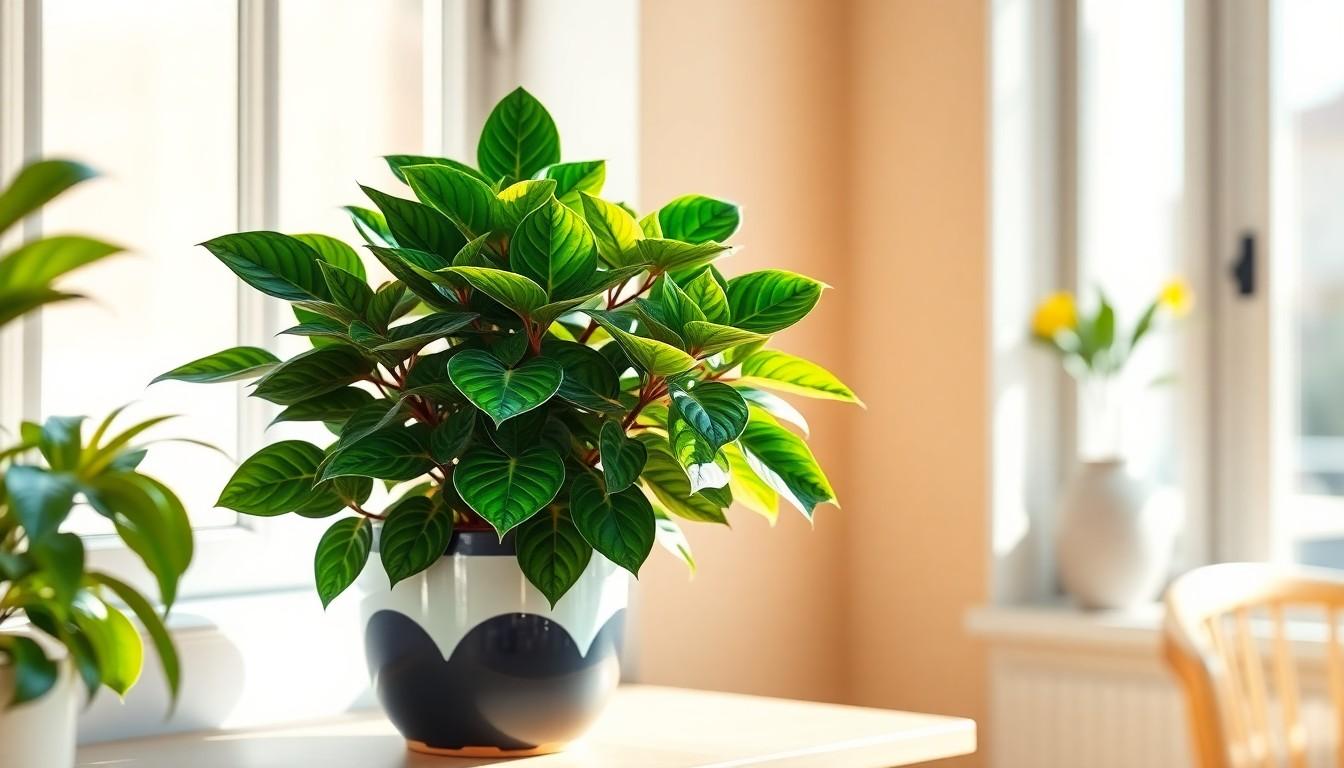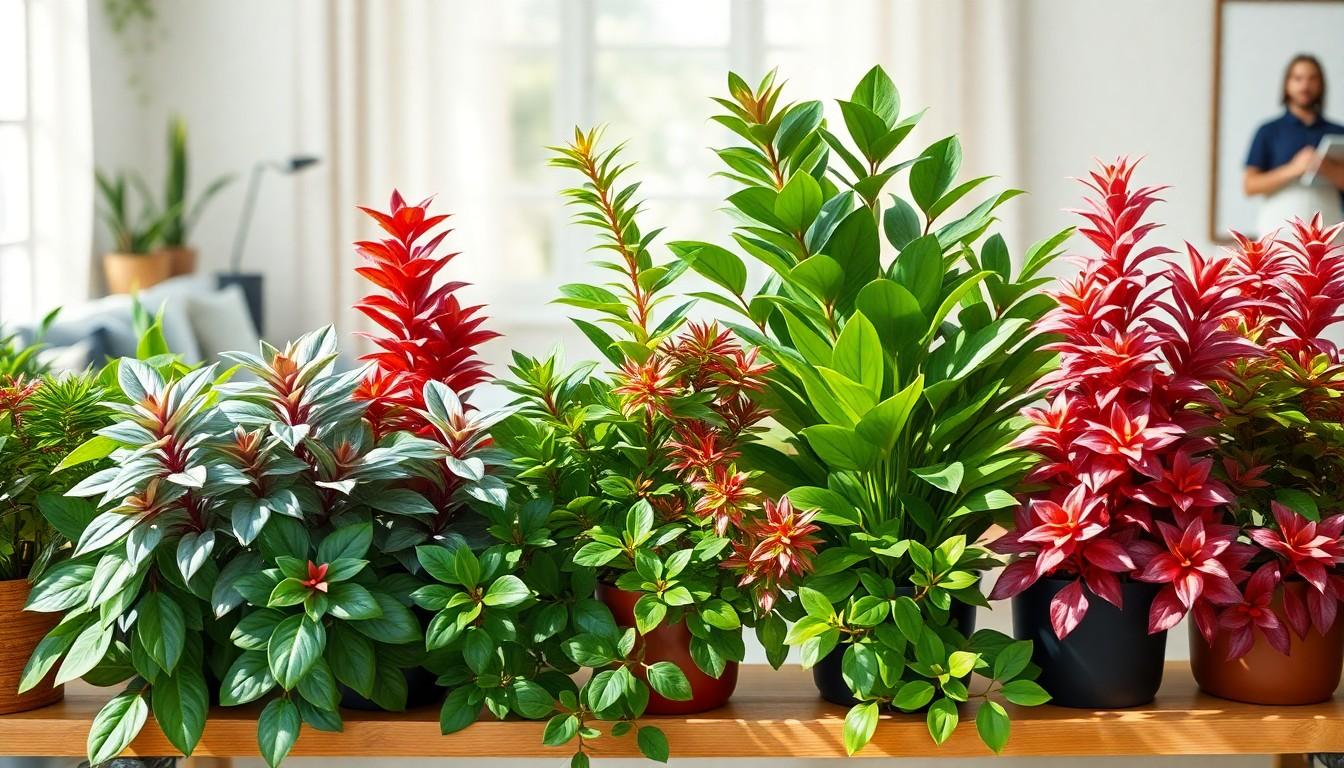Physical Address
304 North Cardinal St.
Dorchester Center, MA 02124

If you’re looking to add a touch of green to your home without the stress of a high-maintenance diva, the Chinese evergreen is your plant soulmate. This resilient beauty thrives on neglect, making it the perfect choice for anyone who’s ever accidentally turned a fern into a dried-up relic. With its striking leaves and easy-going nature, it’s no wonder this houseplant has become a favorite among both seasoned plant parents and those just starting their indoor jungle.
But don’t let its laid-back vibe fool you; a little care goes a long way. Understanding the basics of Chinese evergreen care can transform your living space into a lush oasis. Get ready to learn how to keep this plant happy and thriving, all while enjoying a few laughs along the way. After all, who knew plant care could be this much fun?
Chinese evergreens thrive in various environments, making them suitable choices for homes and offices. Known scientifically as Aglaonema, these plants exhibit beautiful, glossy leaves that come in a range of colors and patterns. Their unique appearance adds character to indoor spaces.
An impressive feature of the Chinese evergreen lies in its ability to tolerate low light conditions. It flourishes even in indirect sunlight, perfect for areas that receive minimal natural light. With proper care, these plants can grow up to three feet tall, making them eye-catching focal points in any room.
Maintenance of Chinese evergreens involves moderate watering and well-draining soil. Watering should occur when the top inch of soil feels dry. This approach prevents root rot while keeping the plant adequately hydrated. A balanced liquid fertilizer applied every four to six weeks during the growing season promotes healthy growth.
Disease and pest resistance characterize Chinese evergreens. They show resilience against common houseplant issues, such as spider mites and mealybugs. Regular inspections help catch any problems early, ensuring the plant remains healthy.
Chinese evergreens adapt well to varying humidity levels, although they prefer higher humidity environments. Mist the leaves occasionally or set the pot on a tray filled with pebbles and water to enhance humidity. With minimal effort, these plants can thrive, delighting plant enthusiasts of all experience levels.
Optimal temperatures for these plants range between 65 and 80 degrees Fahrenheit. They avoid frost and cold drafts, making indoor settings perfect for growth. Chinese evergreens bring beauty and ease into everyday life through their stunning foliage and low-maintenance requirements.

Chinese evergreens, or Aglaonema, represent a versatile choice in houseplants. This variety does well in diverse indoor conditions, appealing to many enthusiasts.
Several common varieties of Chinese evergreens exist. Aglaonema ‘Silver Queen’ displays silver-green leaves, making it a striking option. Aglaonema ‘Red Emerald’ features vibrant red and green patterns that catch the eye. Aglaonema ‘Pamela’ boasts unique pinkish tones, enhancing any space. Additionally, Aglaonema ‘Snow White’ offers beautiful white and green foliage, ideal for brightening rooms.
Unique features define Chinese evergreens. Resilience to low light conditions stands out as a significant advantage. These plants adapt to different humidity levels, thriving in various environments. Glossy leaves bring an appealing aesthetic, with many varieties showcasing stunning color combinations. Their slow growth rate means regular repotting isn’t necessary, making maintenance easier. Another notable aspect includes resistance to common pests, minimizing potential care issues. Overall, Chinese evergreens combine beauty, adaptability, and ease, appealing to many plant lovers.
Caring for a Chinese evergreen involves meeting specific needs for light, water, temperature, and humidity to keep it thriving.
Chinese evergreens thrive in low to medium light. Direct sunlight might scorch the leaves, causing discoloration. Instead, indirect light promotes healthy growth and vibrant colors. Placing the plant near a bright window can benefit its overall health without risking damage. Varieties like ‘Silver Queen’ adapt particularly well to shadier spots, making them suitable for various indoor locations.
Watering should follow a simple guideline. Allow the top inch of soil to dry before giving the plant a thorough drink. Overwatering can lead to root rot, a common issue. During hotter months, the plant may require slightly more frequent watering. In winter, it’s prudent to reduce watering frequency as the plant enters a dormant period. Checking soil moisture regularly ensures optimal hydration without overcompensating.
Optimal temperature for Chinese evergreens ranges from 65 to 80 degrees Fahrenheit. Cold drafts and frost significantly harm the plant, so avoid placing it near open windows during chilly months. Higher humidity helps maintain vibrant foliage, and misting leaves or using a pebble tray can boost local humidity levels. This plant adapts well to various conditions, showing resilience even in lower humidity environments.
Chinese evergreens, while resilient, can encounter some pests and diseases. Detecting issues early helps maintain plant health and vitality.
Spider mites rank as one of the most common pests affecting Chinese evergreens. These tiny pests thrive in dry conditions, often leaving fine webbing on the leaves. Mealybugs also present a threat, appearing as cottony white masses on the plant’s stems and leaves. Other pests like aphids may occasionally target the foliage, weakening the plant over time. Regular inspections make it easier to identify these pests before they multiply.
Maintaining moisture in the environment helps prevent spider mites. Regularly misting the leaves increases humidity, making conditions less favorable for pests. Treating infestations involves using neem oil or insecticidal soap, which are effective and safe options. Applying these treatments every few weeks can eliminate existing pests and deter new ones. Quarantining new plants before introducing them to existing houseplants prevents the spread of pests and diseases. Keeping the leaves clean through gentle wiping not only promotes photosynthesis but also removes potential pests hiding on the surfaces.
Propagation of Chinese evergreens, or Aglaonema, occurs through several straightforward methods. Division represents one common technique; it involves separating the plant into multiple sections during repotting. Each section must contain roots and healthy leaves for successful growth.
Cuttings also offer an effective propagation option. Taking stem cuttings around six inches in length, one should ensure each cutting has a few leaves attached. Placing these cuttings in water promotes root development within a few weeks. Once roots establish, transferring them into soil ensures continued growth.
Another approach entails using offsets or pups. These small plants often develop from the base of the parent plant. Gently removing the pups with roots intact allows for planting in individual pots. Providing proper care to these young plants supports their establishment.
Soil choice plays a crucial role in propagation success. A light, well-draining potting mix encourages root growth and prevents rot. Choosing a mix suitable for tropical plants enhances the chances of thriving new additions.
Environmental conditions also influence propagation outcomes. Maintaining higher humidity levels, similar to the parent plant’s preferences, can aid in root development. Warm temperatures around 70 to 80 degrees Fahrenheit create a favorable environment for new plants.
When propagating Chinese evergreens, patience remains essential. Rooting takes time, and monitoring the cuttings or offsets during this period ensures they receive adequate care. Each method contributes to expanding one’s collection of this resilient houseplant, allowing plant lovers to enjoy more of its beauty indoors.
Caring for a Chinese evergreen can bring vibrancy and life to any indoor space. With its stunning foliage and adaptability to various conditions, it’s a perfect choice for both novices and seasoned plant lovers. By following simple care guidelines and being attentive to its needs, this resilient houseplant can thrive and flourish.
Regular maintenance such as proper watering and humidity management ensures the plant remains healthy. Plus with its resistance to pests, the Chinese evergreen is a low-stress addition to any home or office. Embracing this beautiful plant not only enhances decor but also promotes a calming atmosphere. With a little patience and care, the Chinese evergreen can become a cherished part of any indoor garden.